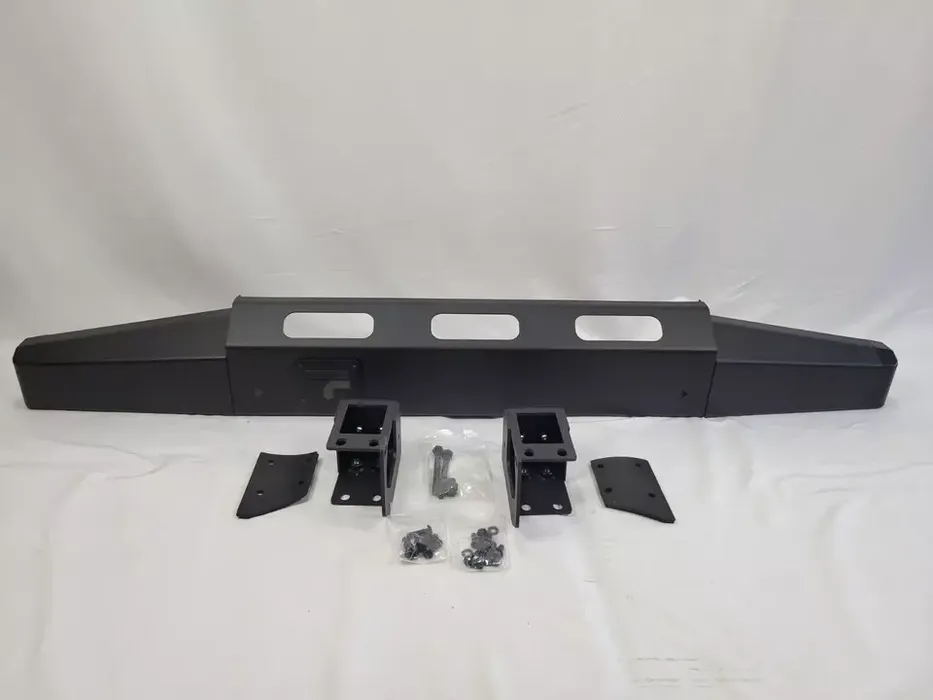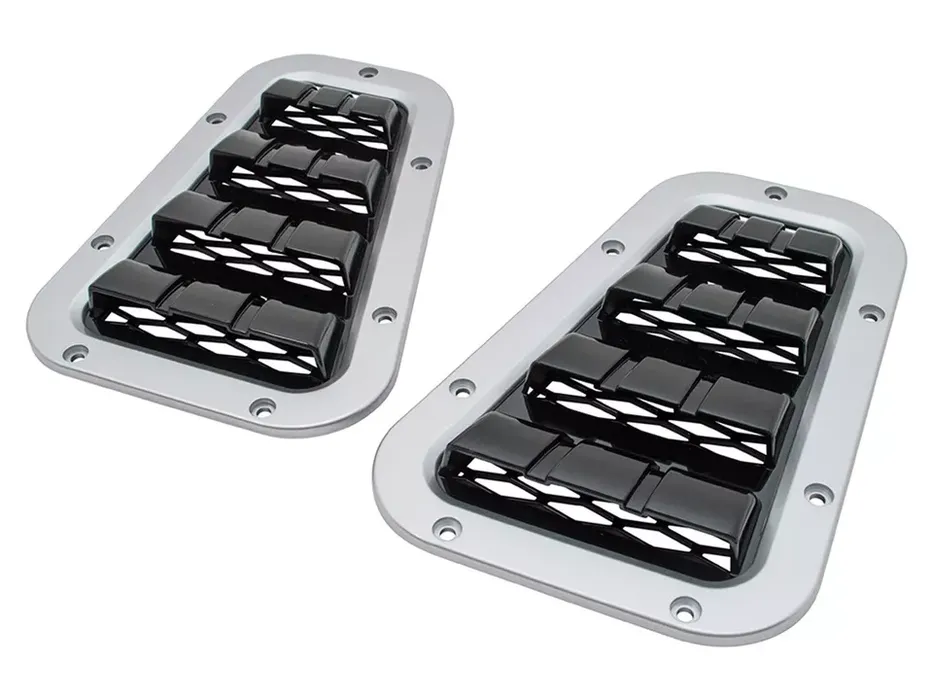
Charles R. Goulding and Jacob T. Nolan explore why 1990s Land Rover Defenders are commanding up to $400,000, delving into their rugged appeal, the rise of bespoke restorations, and the role of 3D printing in maintaining these iconic vehicles.
Land Rover Defenders, especially the models from the 1990s, have strong reputations for being rugged and reliable, making them favorites among off-road enthusiasts and those in need of dependable all-terrain vehicles. The Land Rover Defender’s boxy design and robust construction allow it to handle rough terrains and challenging conditions with ease. Moreover, the Defender’s simple mechanics make it easier to repair in remote locations, a feature highly valued by adventurers. Despite its utilitarian nature, the Defender also offers a unique charm and nostalgic appeal, making it a beloved classic among car enthusiasts.
Car enthusiasts are increasingly spending up to $400,000 on 1990s Land Rover Defenders due to their iconic design and robust off-road capabilities. These vintage vehicles offer a nostalgic charm combined with a sense of adventure, making them highly desirable for collectors. Many buyers invest in customized restorations, ensuring the Defenders are fitted with modern luxuries and performance upgrades while retaining their classic aesthetic.
Enthusiasts have turned to the UK-based company Twisted, renowned for their high-quality Defender rebuilds, to achieve these bespoke transformations. The rarity and historical significance of well-preserved Defenders have driven up their market value significantly. Specialized restoration shops like Twisted cater to the demand for these high-end, bespoke rebuilds, highlighting a broader appreciation for the craftsmanship and timeless appeal of these legendary off-roaders.

Custom Dashboard Panel
An example of a part that can be 3D printed for a 1990s Land Rover Defender is a custom dashboard panel. This panel can be designed to accommodate modern electronics such as GPS, additional gauges, and USB charging ports while maintaining the vintage aesthetic of the vehicle. Using 3D printing allows for precise customization to fit the unique dimensions and layout of the Defender’s interior. The material used can be chosen for durability and a good finish ensuring the panel can withstand the rugged environment typical for these vehicles.
The 3D printing process enables rapid prototyping, allowing for easy modifications and improvements before final production. This approach is cost-effective compared to traditional manufacturing methods, especially for low-volume or one-off parts. 3D printed custom dashboard panel enhances the functionality and modern convenience of the classic Land Rover Defender without compromising its iconic look.
In addition to the custom dashboard panel, other parts that can be 3D printed for a 1990s Land Rover Defender include replacement knobs, switches, and trim pieces. These components often suffer wear and tear over the years, becoming difficult to replace due to their scarcity in the market. By utilizing 3D printing, owners can replicate these parts with high accuracy, ensuring a perfect fit and maintaining the vehicle’s original look. Advanced 3D printing materials, such as carbon-fiber-reinforced nylon, provide increased strength and durability compared to original plastic components.
This technology also allows for the creation of personalized features, such as adding custom logos or modifying the design for improved ergonomics. Additionally, 3D printed parts can be produced in a variety of colors and finishes, offering a level of customization that was previously unattainable. Ultimately, 3D printing offers a versatile and practical solution for preserving and enhancing the functionality of the Land Rover Defender while respecting its classic heritage.

Front Bumper
An important exterior component that can be 3D printed is the front bumper. The original bumpers on older Land Rover Defenders may suffer from corrosion, impacts, or aesthetic wear over time. 3D printing offers a modern solution by allowing owners to create new bumpers using durable materials such as reinforced composites for added strength. This approach ensures resilience against off-road conditions and allows for customization in terms of design and functionality.
Owners can integrate features like winch mounts, recovery points, or additional lighting provisions directly into the bumper design, enhancing the vehicle’s utility without compromising its classic appearance. Furthermore, 3D printing enables efficient production of bumpers tailored to specific Defender models and trim levels, addressing variations in body styles and grille configurations.
In addition to enhancing functionality, 3D printing also facilitates cost-effective manufacturing of complex geometries and intricate details that may be challenging or expensive to achieve through traditional manufacturing methods. This can include custom logo embossing, unique texture patterns, or aerodynamic enhancements that improve airflow around the vehicle. By leveraging 3D printing technology for the front bumper, Land Rover Defender enthusiasts can not only extend the lifespan of their vehicles but also embrace modern innovations to elevate both performance and aesthetic appeal for their off-road adventures.

Hood Vent
A substantial exterior component that can benefit from 3D printing is the hood vent. Hood vents are crucial for improving engine cooling and airflow efficiency, especially during off-road activities where engine heat can build up quickly. By utilizing 3D printing, owners can create new hood vents using materials like ABS or carbon fiber-reinforced nylon, which offer lightweight yet durable properties suitable for rugged conditions. The customization capabilities of 3D printing allow for unique designs that can optimize airflow and enhance the vehicle’s aesthetic appeal. Owners can integrate functional features such as water drainage channels, debris filters, or even aerodynamic enhancements to improve overall vehicle performance. Additionally, 3D printing enables precise replication of precise details and mounting points, ensuring seamless integration with the Defender’s hood structure. This approach not only provides a practical solution for upgrading outdated or damaged hood vents but also empowers enthusiasts to personalize their vehicles with advanced manufacturing techniques that support both form and function.
Furthermore, 3D printing facilitates rapid prototyping and design improvements, allowing designers to test and refine different vent configurations or performance enhancements before final production. This iterative process can lead to optimized designs that enhance engine efficiency, reduce drag, or improve water and debris management during extreme driving conditions. By leveraging the flexibility and precision of 3D printing technology for hood vents, Land Rover Defender owners can achieve customized solutions that meet their specific performance goals while maintaining the vehicle’s iconic design and off-road capabilities.
Possibility of the Use of Hydrogen Engines
As we have discussed in a previous article regarding Hydrogen Engines, the use of Hydrogen Engines is becoming a big part of the automotive industry. Converting older cars, such as the Land Rover Defender, to hydrogen engines is an intriguing possibility that blends classic design with modern, eco-friendly technology. This retrofit could significantly reduce the carbon footprint of these vehicles, contributing to cleaner air and a healthier environment. The process would involve complex modifications, including replacing the internal combustion engine with a hydrogen fuel cell system and ensuring compatibility with the vehicle’s existing components. While this transformation presents technical challenges, advancements in hydrogen technology make it increasingly achievable. Cost and availability of hydrogen refueling infrastructure remain significant hurdles that need addressing. However, the appeal of preserving classic cars while embracing sustainable practices could drive innovation and investment in this area.
3D printing can play a crucial role in the conversion of older cars to hydrogen engines. It allows for the custom fabrication of unique parts needed for retrofitting, such as specialized brackets, mounts, and adapters that integrate new technology with vintage car designs. This technology can produce lightweight, durable components that are custom built to precisely fit the specifications of older vehicles. Additionally, 3D printing can expedite the prototyping process, enabling rapid testing and refinement of parts before full-scale production. By reducing the time and cost associated with traditional manufacturing methods, 3D printing makes the conversion process more accessible and efficient for classic car enthusiasts and restoration professionals.
Where are these restored defenders that are so popular?
In the wealthy coastal communities of Cape Cod and the Hamptons in New York, 1990s Land Rover Defenders are a common sight, reflecting a blend of rugged utility and status symbol. Owners often cherish them for their iconic design and off-road capabilities, which suit the region’s variable terrain and climate. However, some of the owners will use the classic vehicles for simple tasks or short drives to the market or into the beautiful town. These vehicles are typically seen navigating sandy beaches, forested trails, and upscale neighborhoods, embodying a sense of adventure and luxury. In both areas, owning a Land Rover Defender from the 1990s can signify a connection to tradition and a preference for classic automotive craftsmanship. They’re often maintained meticulously, showcasing a blend of vintage appeal and practical use in these picturesque coastal settings.
The Research & Development Tax Credit
The now permanent Research and Development (R&D) Tax Credit is available for companies developing new or improved products, processes, and/or software.
3D printing can help boost a company’s R&D Tax Credits. Wages for technical employees creating, testing, and revising 3D printed prototypes can be included as a percentage of eligible time spent for the R&D Tax Credit. Similarly, when used as a method of improving a process, time spent integrating 3D printing hardware and software counts as an eligible activity. Lastly, when used for modeling and preproduction, the costs of filaments consumed during the development process may also be recovered.
Whether it is used for creating and testing prototypes or for final production, 3D printing is a great indicator that R&D Credit eligible activities are taking place. Companies implementing this technology at any point should consider taking advantage of R&D Credits.
Conclusion
In addition to the Land Rover Defender, other car companies are starting to use 3D printing for their vehicles. The Ford Bronco, F-150 Lightning, and the fully electric Mach 1 are some of the vehicles that the 3D printing industry is getting involved with. In previous articles, we have published about 3D printing in the automotive industry where you can find more information about Ford, Volkswagen (VW), Rivian, and other automotive companies getting involved with 3D printing.
